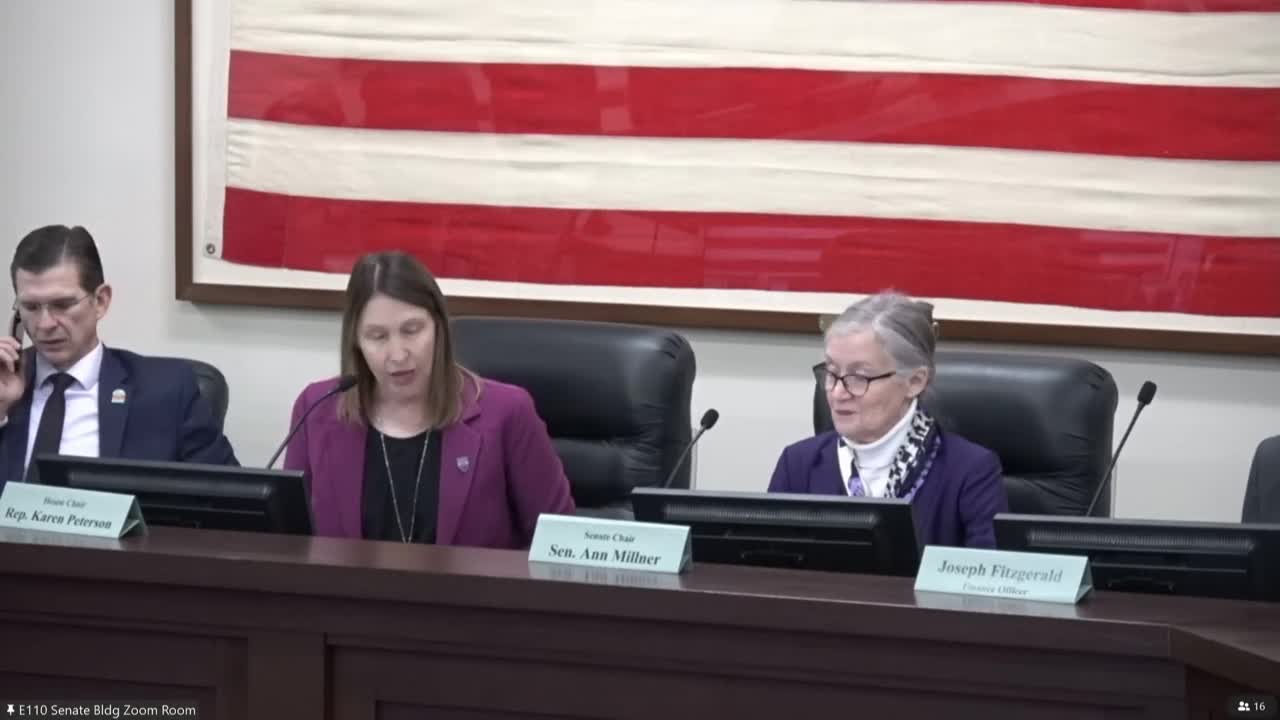Southwest Technical College showcases growth in enrollments and budget during presentation
February 06, 2025 | 2025 Utah Legislature, Utah Legislature, Utah Legislative Branch, Utah
This article was created by AI summarizing key points discussed. AI makes mistakes, so for full details and context, please refer to the video of the full meeting. Please report any errors so we can fix them. Report an error »

In a recent meeting of the Higher Education Appropriations Subcommittee, the focus was on the budget presentations from Southwest Technical College and Dixie Technical College, highlighting their growth, challenges, and the vital role they play in the community.
As the meeting commenced, the atmosphere was charged with anticipation, even without a quorum present. Joseph, a representative from Southwest Technical College, began by outlining the college's budget and performance metrics. Located in a rural region encompassing Beaver, Garfield, Iron, and Kane school districts, Southwest Tech has seen significant enrollment growth, with numbers rising from 1,800 in 2016 to over 2,000 in 2024. This growth is attributed to increased demand for skilled workers in various trades, including plumbing and electrical work.
President Wood of Southwest Tech emphasized the importance of dispelling misconceptions surrounding technical education, asserting that it is not merely a fallback option but a viable first-choice pathway for many students. He highlighted the college's partnerships with Southern Utah University, which facilitate dual enrollment programs that save students money and provide them with valuable credentials.
The discussion also touched on the challenges faced by Southwest Tech, particularly the lack of capital appropriations and the need for a mobile lab to reach students in more remote areas. President Wood expressed hope for future funding to support these initiatives.
Transitioning to Dixie Technical College, Joseph presented similar budgetary insights, noting that Dixie Tech has experienced rapid growth, with a 20% increase in awards and graduates this fiscal year alone. President Russian of Dixie Tech shared a poignant story about a high school student who, after losing his father, quickly enrolled in an HVAC program and found employment through work-based learning opportunities. This narrative underscored the college's commitment to providing immediate, impactful education that meets the needs of the community.
Both colleges reported high job placement rates, with Dixie Tech boasting a 93% placement rate for graduates. The importance of industry partnerships was a recurring theme, as both institutions rely on collaboration with local businesses to ensure their programs align with workforce demands.
As the meeting concluded, the committee members expressed their appreciation for the innovative approaches taken by both colleges to enhance technical education in Utah. The discussions highlighted the critical role these institutions play in preparing students for successful careers while addressing the skills gap in the workforce. The future looks promising, with both colleges poised to expand their offerings and continue their vital contributions to the community.
As the meeting commenced, the atmosphere was charged with anticipation, even without a quorum present. Joseph, a representative from Southwest Technical College, began by outlining the college's budget and performance metrics. Located in a rural region encompassing Beaver, Garfield, Iron, and Kane school districts, Southwest Tech has seen significant enrollment growth, with numbers rising from 1,800 in 2016 to over 2,000 in 2024. This growth is attributed to increased demand for skilled workers in various trades, including plumbing and electrical work.
President Wood of Southwest Tech emphasized the importance of dispelling misconceptions surrounding technical education, asserting that it is not merely a fallback option but a viable first-choice pathway for many students. He highlighted the college's partnerships with Southern Utah University, which facilitate dual enrollment programs that save students money and provide them with valuable credentials.
The discussion also touched on the challenges faced by Southwest Tech, particularly the lack of capital appropriations and the need for a mobile lab to reach students in more remote areas. President Wood expressed hope for future funding to support these initiatives.
Transitioning to Dixie Technical College, Joseph presented similar budgetary insights, noting that Dixie Tech has experienced rapid growth, with a 20% increase in awards and graduates this fiscal year alone. President Russian of Dixie Tech shared a poignant story about a high school student who, after losing his father, quickly enrolled in an HVAC program and found employment through work-based learning opportunities. This narrative underscored the college's commitment to providing immediate, impactful education that meets the needs of the community.
Both colleges reported high job placement rates, with Dixie Tech boasting a 93% placement rate for graduates. The importance of industry partnerships was a recurring theme, as both institutions rely on collaboration with local businesses to ensure their programs align with workforce demands.
As the meeting concluded, the committee members expressed their appreciation for the innovative approaches taken by both colleges to enhance technical education in Utah. The discussions highlighted the critical role these institutions play in preparing students for successful careers while addressing the skills gap in the workforce. The future looks promising, with both colleges poised to expand their offerings and continue their vital contributions to the community.
View full meeting
This article is based on a recent meeting—watch the full video and explore the complete transcript for deeper insights into the discussion.
View full meeting

